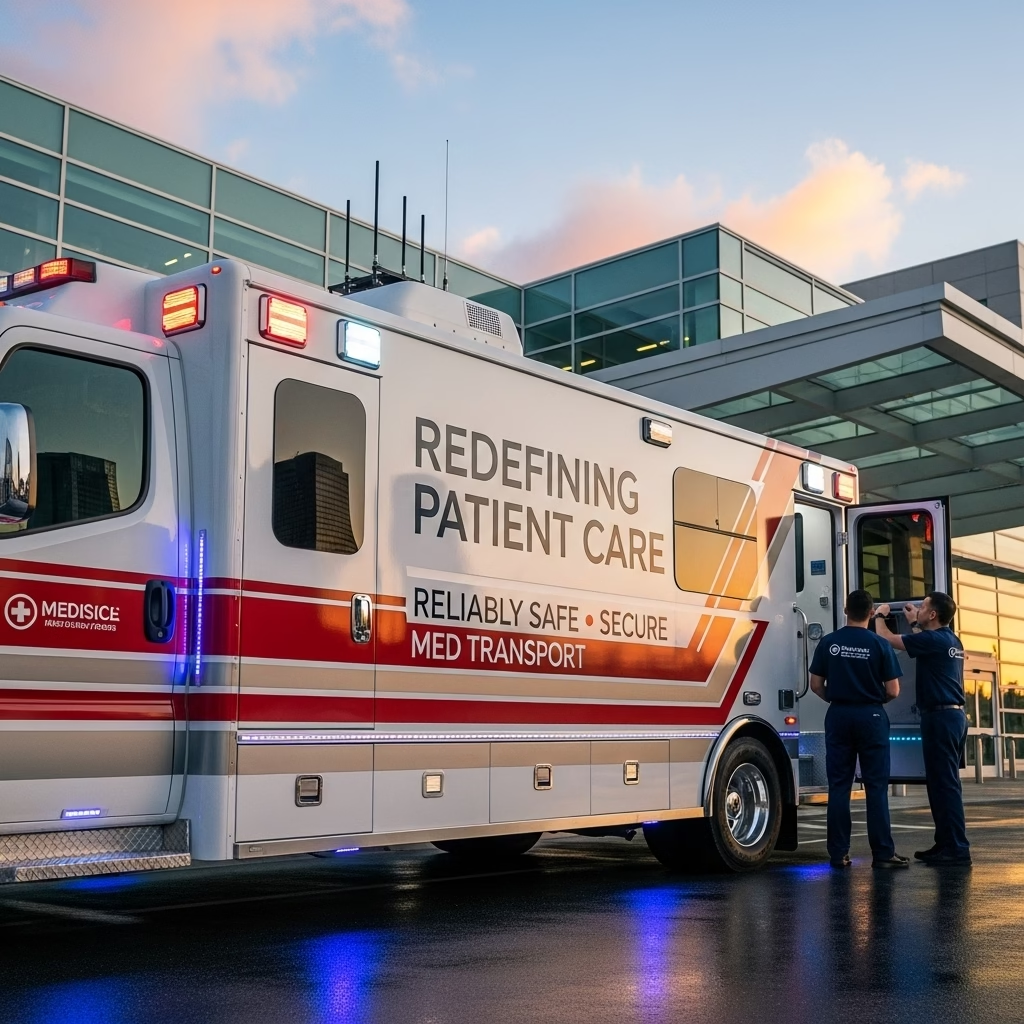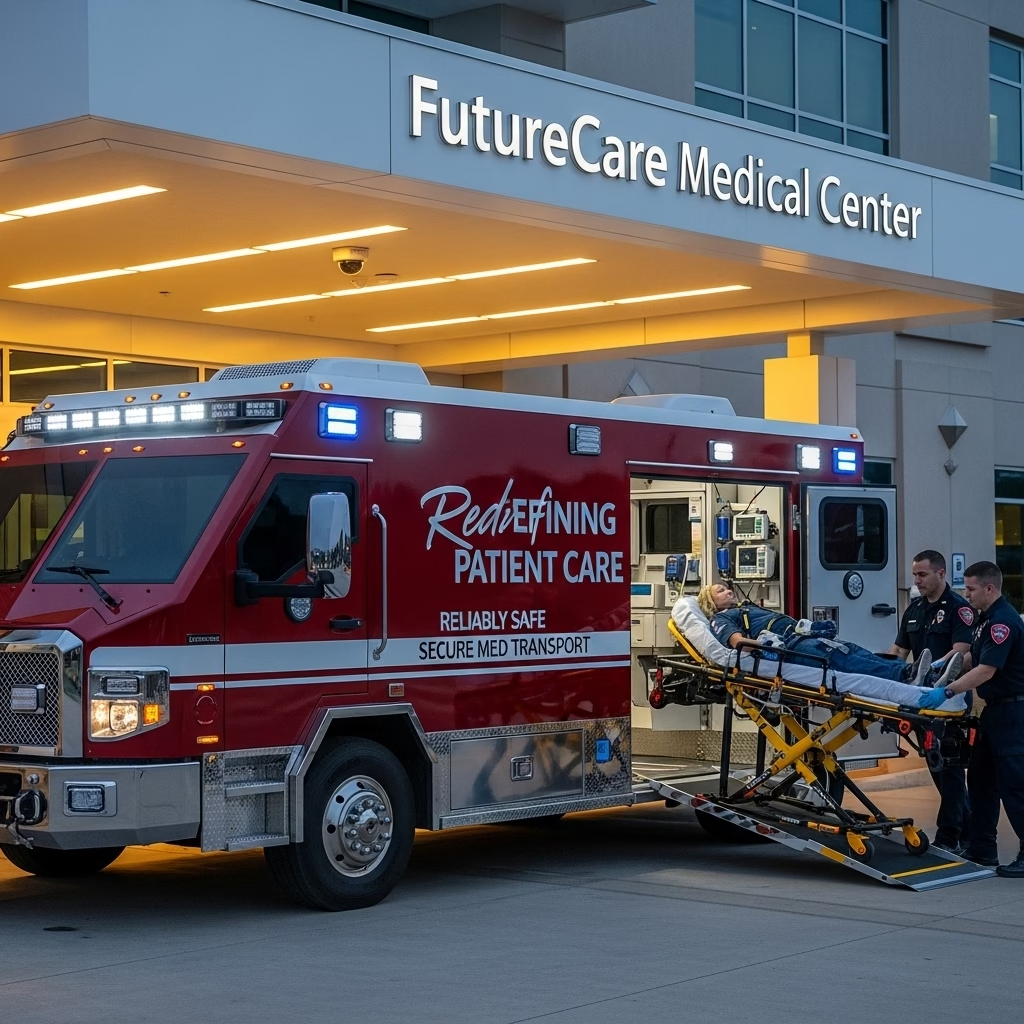HEALTH
Clydebank Health Centre: A Beacon of Modern Healthcare Delivery

Nestled in the heart of West Dunbartonshire, the Clydebank Health Centre stands as a testament to Scotland’s commitment to progressive, patient-centered healthcare. This state-of-the-art facility, which opened its doors in November 2018, represents a £22 million investment in the health and wellbeing of the local community. More than just a medical facility, the centre embodies a revolutionary approach to integrated care, bringing together general practice, specialist services, and social care under one roof. This comprehensive article explores how the Clydebank Health Centre has transformed healthcare delivery for its 40,000 registered patients, setting new standards for accessibility, efficiency, and quality of care in Scotland’s NHS system.
A Vision Realised: The Development of Clydebank Health Centre
The journey to establish the Clydebank Health Centre began as part of NHS Greater Glasgow and Clyde’s ambitious strategy to modernise primary care infrastructure across the region. For years, local residents had relied on ageing, fragmented facilities that no longer met the demands of 21st century healthcare. The vision was clear: create a purpose-built centre that would not only replace outdated buildings but fundamentally rethink how healthcare services could be delivered.
Developed through a partnership between NHS Greater Glasgow and Clyde, West Dunbartonshire Health and Social Care Partnership, and Hub West Scotland, the project brought together public sector expertise with private sector efficiency. The result was a 5,400 square metre facility designed from the ground up to facilitate collaborative working between different healthcare professionals while prioritising patient comfort and accessibility.
Architecturally, the centre breaks from traditional clinical designs. Its light-filled atrium and welcoming reception area immediately set a different tone from the often impersonal NHS buildings of the past. Large windows flood consultation rooms with natural light, while thoughtful use of colour and artwork creates a calming environment. These design choices reflect growing evidence about how healthcare environments can influence patient outcomes and staff wellbeing.
Comprehensive Services Under One Roof
What truly sets Clydebank Health Centre apart is its unprecedented range of integrated services. The facility houses four GP practices serving approximately 40,000 patients, but its offering extends far beyond traditional general practice.
Primary Care Excellence
At its core, the centre provides comprehensive GP services with extended opening hours, reducing the need for patients to attend hospital A&E departments for minor ailments. Each practice maintains its own identity while benefiting from shared resources and facilities. The on-site pharmacy not only dispenses prescriptions but offers medication reviews and health advice, forming a crucial part of the care continuum.
Specialist Community Services
The centre hosts an impressive array of community health services that would traditionally require separate visits to different locations. These include:
-
District nursing teams providing care for housebound patients
-
Health visitors supporting families with young children
-
Podiatry services for foot and lower limb care
-
Physiotherapy and occupational therapy departments
-
Mental health and addiction support services
This co-location means a patient with diabetes, for instance, can see their GP, have a foot check with the podiatrist, and attend a diabetes education session all in one visit – a level of coordination that dramatically improves both patient experience and clinical outcomes.
Diagnostic and Treatment Facilities
The centre boasts diagnostic capabilities rarely found in community settings, including:
-
Digital X-ray facilities
-
Ultrasound services
-
Phlebotomy (blood testing) services
-
Treatment rooms for minor procedures
These reduce the burden on local hospitals and provide faster access to diagnostic tests, enabling quicker diagnosis and treatment decisions.
Integrated Social Care
Perhaps most innovatively, the centre incorporates social care teams alongside medical services. Social workers, care managers, and third sector organisations like the Citizens Advice Bureau work side-by-side with healthcare professionals. This integration recognises that health outcomes are profoundly influenced by social factors like housing, finances, and family support.
The Patient Experience: Designed for Comfort and Efficiency
From the moment patients enter the Clydebank Health Centre, the difference from traditional NHS facilities is apparent. The spacious, light-filled reception area features clear signage and self-check-in kiosks, reducing queues and anxiety. Comfortable seating areas with charging points and free WiFi make waiting more pleasant, while separate zones help maintain privacy for sensitive discussions.
Consultation rooms are designed to clinical specifications while incorporating homely touches. Many feature dual computer screens allowing clinicians to share information visually with patients during consultations. The layout has been carefully planned to minimise unnecessary walking for patients with mobility issues, with all essential services accessible via lifts and wide corridors.
Digital innovation plays a key role in enhancing the patient experience. An electronic check-in system notifies clinicians when patients arrive, while integrated IT systems allow secure sharing of patient records between different services (with appropriate consent). This eliminates the frustration of repeating medical histories to different professionals and reduces clinical risks from incomplete information.
Transforming Healthcare Delivery
The Clydebank Health Centre represents more than just a new building – it embodies a fundamental shift in how healthcare is organised and delivered. By bringing together previously separate services, it has broken down traditional silos between primary and secondary care, between health and social care, and between NHS and third sector provision.
Collaborative Working Models
The physical co-location of different services has fostered new ways of working. Weekly multidisciplinary team meetings bring together GPs, nurses, social workers, and specialists to discuss complex cases. This collaborative approach has proven particularly valuable for managing patients with multiple long-term conditions, where medical, social, and psychological factors intertwine.
The centre has also pioneered “hot clinics” where GPs can immediately refer patients to on-site specialists for same-day assessment, avoiding unnecessary hospital referrals. For example, a patient with a suspicious skin lesion might see a dermatologist within hours rather than waiting weeks for a hospital appointment.
Preventative Care and Early Intervention
The integrated model allows for a stronger focus on prevention and early intervention. Health visitors work closely with GPs to identify vulnerable families, while lifestyle coaches support patients to make sustainable health improvements. Regular health promotion events in the centre’s community spaces tackle issues from smoking cessation to diabetes prevention.
Reducing Hospital Pressures
By providing comprehensive services in the community, the centre has helped reduce pressure on local hospitals. Minor injuries that would previously have gone to A&E can often be treated on-site, while better management of chronic conditions has led to fewer emergency admissions. The availability of diagnostics in the community means many patients can be investigated and treated without hospital referral.
Impact and Outcomes
Since its opening, the Clydebank Health Centre has demonstrated measurable benefits across several key areas:
Improved Patient Satisfaction
Patient surveys consistently show high satisfaction levels, particularly regarding:
-
Reduced waiting times for appointments
-
Convenience of accessing multiple services in one location
-
Quality of facilities and environment
-
Perceived quality of care
Clinical Outcomes
Early data suggests improvements in:
-
Chronic disease management indicators (e.g., blood pressure and diabetes control)
-
Medication adherence through better pharmacist integration
-
Early detection of health issues through improved screening uptake
Operational Efficiency
The centre has achieved:
-
Reduced DNA (did not attend) rates through reminder systems and easier access
-
Better staff utilisation through shared administrative functions
-
Lower overhead costs compared to maintaining multiple separate facilities
Staff Experience
Feedback from healthcare professionals indicates:
-
Improved job satisfaction through collaborative working
-
Better opportunities for professional development
-
Reduced professional isolation, particularly for community-based staff
Challenges and Lessons Learned
The development and operation of the Clydebank Health Centre has not been without challenges, each providing valuable lessons for similar projects:
Cultural Change
Bringing together staff from different organisations with distinct working cultures required careful management. Initial resistance to change was overcome through:
-
Extensive pre-opening engagement with all staff groups
-
Team-building activities across professional boundaries
-
Clear communication about the benefits of integrated working
IT Integration
Linking different IT systems between primary care, community services, and social care proved complex. Solutions included:
-
Investment in interoperable systems
-
Comprehensive staff training
-
Temporary workarounds during transition periods
Wayfinding
The large, multifunctional space initially caused some confusion. This was addressed through:
-
Improved signage and floor markings
-
Volunteer greeters to assist patients
-
Digital wayfinding aids via the centre’s app
The Future of Clydebank Health Centre
As the centre matures, plans are underway to expand and enhance its services:
Digital Health Expansion
-
Wider rollout of video consultations
-
Development of a patient portal for online access to records and services
-
Pilot of remote monitoring for chronic conditions
Service Development
-
Expansion of mental health services
-
Enhanced frailty services for elderly patients
-
Introduction of specialist clinics for conditions like COPD and heart failure
Community Engagement
-
Development of a patient participation group to guide future developments
-
Expansion of health education programmes
-
Partnerships with local schools and employers
Conclusion
The Clydebank Health Centre stands as a shining example of what modern, integrated healthcare can achieve. By breaking down traditional barriers between services and placing patient convenience at the heart of its design, it has transformed healthcare delivery for its community. The centre demonstrates that thoughtful design, technological innovation, and collaborative working can create a healthcare environment that is not only more efficient but more humane.
As the NHS continues to evolve to meet 21st century challenges, the lessons from Clydebank – about integration, about patient-centered design, about breaking down professional silos – will become increasingly valuable. The centre is more than just a building; it’s a blueprint for the future of community healthcare in Scotland and beyond. Its success proves that with vision, investment, and collaboration, we can create health services that are fit for the future while remaining true to the founding principles of the NHS: comprehensive, accessible, and free at the point of need.
HEALTH
How to Transport a Jacuzzi: A Complete Step-by-Step Guide

Moving a jacuzzi is not like moving regular furniture. These luxurious hot tubs are heavy, bulky, and delicate, requiring careful planning, the right equipment, and proper techniques to ensure a safe relocation. If you’ve been wondering how to transport a jacuzzi without causing damage to the spa, your property, or yourself, you’re not alone.
In today’s world of home upgrades and relocations, more homeowners are investing in hot tubs, which has made reliable jacuzzi transportation a sought-after service. This article will walk you through the planning, equipment, steps, and precautions required to move a jacuzzi safely—whether across your yard, to another property, or into storage.
Why Jacuzzi Transport Requires Extra Care
Unlike many household items, jacuzzis come with unique challenges:
-
Size and Weight: A typical jacuzzi can weigh anywhere between 400–900 pounds without water.
-
Delicate Parts: Pumps, jets, and electrical systems must be protected from damage.
-
Limited Access Points: Many need to be maneuvered through tight spaces or uneven terrain.
-
Safety Concerns: Lifting without proper support can cause injuries or property damage.
This is why learning how to transport a jacuzzi is essential before attempting the move.
Step 1: Planning the Move
The first step in transporting a jacuzzi is thorough planning. Consider the following:
-
Pathway Check: Measure doorways, gates, and hallways to ensure the jacuzzi fits.
-
Route Preparation: Remove obstacles such as outdoor furniture, plants, or debris.
-
Teamwork: Gather at least 3–4 people to help with lifting and maneuvering.
-
Professional Help: If the move seems too complex, hiring specialists is a safe option.
Proper preparation reduces stress and prevents costly mistakes during transport.
Step 2: Gathering the Right Equipment
The next step in understanding how to transport a jacuzzi is having the correct tools:
-
Furniture Dollies: Heavy-duty dollies help carry the weight.
-
Lifting Straps: Reduce strain on your back while distributing weight evenly.
-
Plywood Sheets: Create a smooth surface over grass, gravel, or uneven ground.
-
Protective Blankets: Prevent scratches and damage to the jacuzzi’s shell.
-
Ratchet Straps: Secure the jacuzzi during transportation on a trailer or truck.
Investing in proper equipment ensures the move is efficient and safe.
Step 3: Preparing the Jacuzzi
Before lifting, your jacuzzi must be fully prepared:
-
Drain the Water: Remove all water using the drain spout or a pump.
-
Disconnect Electrical Lines: Shut off power and carefully detach wiring.
-
Remove Accessories: Take off covers, steps, and detachable parts.
-
Clean the Spa: Dry the interior to avoid slippery surfaces during handling.
Only once these steps are completed should you begin the actual relocation.
Step 4: Lifting and Moving the Jacuzzi
Here’s the detailed process on how to transport a jacuzzi safely:
-
Tip the Jacuzzi on Its Side: With a team, carefully tilt it while ensuring stability.
-
Position on Dollies: Place furniture dollies under the base for easier rolling.
-
Secure with Straps: Use ratchet straps to prevent shifting during movement.
-
Navigate Slowly: Move gradually, especially around corners or uneven ground.
-
Use Plywood Paths: If crossing soft ground, place plywood sheets to create a firm surface.
Safety should remain the top priority throughout the move.
Step 5: Loading for Transport
When loading the jacuzzi onto a moving truck or trailer:
-
Use a Ramp: A sturdy loading ramp ensures smoother lifting.
-
Team Coordination: Communicate clearly to keep movements synchronised.
-
Secure Tightly: Strap the jacuzzi firmly against the truck or trailer wall.
-
Check Balance: Ensure even weight distribution to avoid shifting during transit.
Taking time at this stage prevents damage during road transport.
Step 6: Setting Up at the New Location
Once the jacuzzi arrives at its destination:
-
Unstrap Carefully: Remove securing straps without sudden movements.
-
Move into Position: Roll the jacuzzi to its new location with dollies.
-
Level the Ground: Ensure the surface is flat and capable of supporting the spa’s weight.
-
Reconnect Power and Plumbing: Hire an electrician if necessary to ensure proper setup.
-
Refill with Water and Test: Once everything is connected, fill and test the jacuzzi before use.
A successful setup ensures your jacuzzi is ready for relaxation again.
Common Mistakes to Avoid
When learning how to transport a jacuzzi, avoid these common errors:
-
Underestimating Weight: Never attempt the move alone.
-
Skipping Preparation: Failing to drain or disconnect properly can cause damage.
-
Improper Equipment: Using basic dollies or no straps increases risks.
-
Rushing the Process: Quick movements can lead to accidents.
-
Ignoring Professional Help: Some moves simply require experts.
Avoiding these mistakes makes the process smoother and safer.
Professional vs. DIY Jacuzzi Transport
Should you hire professionals or move the jacuzzi yourself?
-
DIY Transport: More cost-effective, but requires strength, tools, and teamwork.
-
Professional Movers: Costlier, but safer and ideal for complex moves (tight spaces, stairs, or long-distance).
If safety, convenience, and protection are priorities, professional services are often the best choice.
Looking Ahead: The Future of Jacuzzi Transport
As home wellness solutions like hot tubs and spas become more common, so does the demand for reliable jacuzzi transportation services. Companies are beginning to integrate advanced moving tools, GPS tracking, and specialized staff training to improve safety and efficiency.
Learning how to transport a jacuzzi will remain a valuable skill for homeowners, but the growing market for professionals ensures more reliable options for those who prefer expert handling.
Conclusion
Transporting a jacuzzi requires patience, preparation, and the right techniques. By following this step-by-step guide, you now understand how to transport a jacuzzi safely—protecting your investment, your home, and your health.
Whether moving it a few feet in your backyard or across town, the key is careful planning, teamwork, and prioritizing safety. For those unsure about the process, hiring professionals remains the most reliable option.
At the end of the day, moving your jacuzzi successfully means one thing—you’ll be back to enjoying warm, relaxing spa sessions without the stress of a risky move.
HEALTH
Redefining Patient Care with Reliably Safe Secure Med Transport

In healthcare, transportation is more than movement—it’s a lifeline. Whether it’s transferring patients to specialized facilities, ensuring timely emergency care, or providing safe travel for routine medical visits, transportation plays a critical role in the continuum of care. This is where reliably safe, secure medical transport stands out as an essential service, designed to bridge patient safety, comfort, and efficiency.
Just as modern leadership emphasizes both performance and purpose, medical transport today is about more than vehicles and schedules—it’s about building trust, reducing risks, and creating a patient-first experience.
What is Reliably Safe Secure Med Transport?
Reliably safe and secure med transport refers to specialized medical transportation services that prioritize patient well-being throughout the journey. Unlike standard transport, these services are equipped with:
-
Medical-grade vehicles designed for safety and accessibility.
-
Trained personnel who understand patient needs, from seniors to those with chronic conditions.
-
Advanced equipment to handle emergencies during travel.
At its core, this service ensures that every trip—whether routine or critical—is delivered with professional care, security, and reliability.
Why It Matters in Today’s Healthcare Landscape
Healthcare is evolving rapidly, and with it comes the need for reliable patient mobility solutions. Reliably safe and secure med transport is vital because:
-
Patient Safety: Transportation errors or unsafe conditions can risk lives. Specialized services mitigate those risks.
-
Access to Care: Many patients, particularly seniors or those with disabilities, rely on secure transport to reach essential medical services.
-
Peace of Mind: Families and caregivers feel reassured knowing their loved ones are in safe, professional hands.
This approach transforms transportation from a logistical challenge into a critical extension of healthcare delivery.
Core Principles of Safe Medical Transport
At the heart of reliably safe, secure med transport is a philosophy built on patient-centered values. These include:
-
Safety First: Vehicles equipped with safety features, sanitization protocols, and medical monitoring systems.
-
Compassionate Care: Staff trained not only in medical support but also in empathy and communication.
-
Accessibility: Services tailored for wheelchairs, stretchers, and patients with special mobility needs.
-
Reliability: Timely arrivals and departures, reducing stress for patients with scheduled treatments.
Together, these principles create a transport model that is both clinically sound and emotionally supportive.
Bridging Healthcare with Secure Transport Solutions
What makes this service noteworthy is its integration with broader healthcare outcomes. By ensuring safe and reliable travel, it directly supports:
-
Continuity of Care: Patients can attend follow-up appointments, dialysis sessions, or therapies without disruption.
-
Reduced Hospital Readmissions: Safe transport reduces risks of injury or complications that could lead to repeat hospital stays.
-
Community Wellness: Reliable transport helps patients remain engaged with their care plans, benefiting families and communities.
In essence, reliably safe and secure medical transport strengthens the link between healthcare systems and the patients they serve.
The Role of Technology in Modern Med Transport
Just as digital platforms have reshaped leadership communication, technology is reshaping patient transport. Key innovations include:
-
GPS Tracking: Families can monitor journeys in real time.
-
Digital Booking Systems: Patients or caregivers can schedule rides with ease.
-
Medical Monitoring Tools: Vital signs can be tracked during transit for high-risk patients.
-
Data Security: Ensuring patient information remains confidential throughout the process.
These advancements make medical transport not only safer but also more transparent and efficient.
A Model for Patient-Centered Healthcare
Reliably safe and secure med transport reflects a shift in patient expectations, especially among populations that value dignity, trust, and accountability. Just as new generations seek authenticity in leadership, patients and families now seek services that embody:
-
Transparency: Clear communication about procedures, costs, and care standards.
-
Inclusivity: Services that cater to all demographics, from children to the elderly.
-
Trust: Knowing that every trip is managed with the highest standards of safety.
This position medical transport providers as not just service operators but as partners in health and healing.
Challenges and Opportunities
Like any healthcare service, medical transport faces challenges:
-
Balancing Costs and Quality: Providing advanced vehicles and trained staff while keeping services affordable.
-
Staff Training: Ensuring personnel stay up-to-date with medical and safety standards.
-
Market Demand: Meeting the rising need for patient transport as populations age.
Yet these challenges also create opportunities:
-
Innovation in Equipment and Systems.
-
Expansion into underserved areas.
-
Building stronger collaborations with hospitals and clinics.
By embracing adaptability, med transport providers can ensure they remain both relevant and impactful in the future of healthcare.
Looking Ahead
The future of reliably safe, secure med transport lies in combining compassion with innovation. As technology advances, populations grow, and healthcare demands increase, secure patient transport will become even more critical.
Leaders in this space will be those who focus not only on efficiency but also on empathy, patient dignity, and trust. In doing so, they will set new standards for how transportation supports the health and well-being of communities.
Conclusion
Just as modern leadership redefines success by combining profit with purpose, medical transport redefines patient care by blending safety with compassion. Reliably safe and secure medical transport is not simply about moving patients from point A to B—it’s about ensuring every journey is comfortable, secure, and meaningful.
As healthcare evolves, these services will remain at the heart of patient trust, community resilience, and healthcare excellence.
BLOG
Theapknews.shop Health: Your Gateway to Wellness and Tech

In today’s fast-paced world, health and technology are increasingly intertwined. From fitness apps to telemedicine platforms, digital tools are revolutionising how we approach wellness. One platform that stands out in this space is theapknews.shop health, a hub for health-related apps, tips, and resources. This article explores the offerings of Theapknews.shop Health, its role in promoting wellness, and how it leverages technology to empower users on their health journeys.
What is Theapknews.shop Health?
Theapknews.shop Health is a dedicated section of Theapknews.shop, a popular platform known for providing reliable and up-to-date information about apps, software, and digital tools. The health segment focuses on curating and reviewing health, fitness, and wellness applications, offering users a one-stop destination for all their health-related needs. Whether you’re looking for a fitness tracker, a meditation app, or a diet planner, theapknews.shop health has you covered.
The platform is designed to cater to a wide audience, from fitness enthusiasts and wellness beginners to healthcare professionals and tech-savvy individuals. By combining expert reviews, user feedback, and detailed guides, It helps users make informed decisions about the tools they use to improve their well-being.
Key Features of Theapknews.shop Health
Theapknews.shop Health stands out for its comprehensive and user-friendly approach to health and wellness. Here are some of its key features:
- App Reviews and Recommendations: The platform provides in-depth reviews of health and fitness apps, highlighting their features, pros, and cons. This helps users choose the best tools for their specific needs.
- Wellness Guides and Tips: Theapknews.shop Health offers practical advice on topics such as nutrition, exercise, mental health, and sleep. These guides are designed to educate and inspire users to adopt healthier lifestyles.
- Latest Trends in Health Tech: Staying updated on the latest advancements in health technology is crucial. Theapknews.shop Health covers emerging trends, such as wearable devices, AI-driven health tools, and telemedicine platforms.
- User-Friendly Interface: The platform is easy to navigate, making it simple for users to find the information they need. Whether you’re searching for a specific app or browsing general wellness tips, the intuitive design ensures a seamless experience.
- Community Engagement: Theapknews.shop Health fosters a sense of community by encouraging users to share their experiences and feedback. This creates a collaborative environment where individuals can learn from one another.
The Role of Technology in Health and Wellness
It is a testament to the transformative power of technology in the health and wellness industry. Here’s how it leverages digital tools to promote well-being:
- Fitness and Activity Tracking: Fitness apps and wearable devices have made it easier than ever to monitor physical activity, set goals, and track progress. Theapknews.shop Health reviews popular fitness trackers like Fitbit, MyFitnessPal, and Strava, helping users find the right tools to stay active.
- Mental Health Support: Mental health is a critical component of overall wellness. The platform highlights apps like Calm, Headspace, and BetterHelp, which offer meditation, therapy, and stress management resources.
- Nutrition and Diet Planning: Maintaining a healthy diet is essential for well-being. Theapknews.shop Health features apps like MyPlate, Yazio, and Lifesum, which provide meal plans, calorie tracking, and nutritional advice.
- Telemedicine and Remote Care: The rise of telemedicine has made healthcare more accessible. The platform reviews apps like Teladoc and Amwell, which connect users with healthcare professionals for virtual consultations.
- Sleep Improvement: Quality sleep is vital for health. Theapknews.shop Health recommends apps like Sleep Cycle and Pillow, which analyse sleep patterns and provide tips for better rest.
Benefits of Using Theapknews.shop Health
It offers numerous benefits to users seeking to improve their health and wellness:
- Convenience: With its extensive database of apps and resources, Theapknews.shop Health saves users time and effort by providing all the information they need in one place.
- Expertise: The platform’s reviews and guides are backed by research and expert opinions, ensuring that users receive accurate and reliable information.
- Personalisation: By offering a wide range of options, Theapknews.shop Health allows users to find tools that align with their unique goals and preferences.
- Empowerment: The platform empowers users to take control of their health by providing them with the knowledge and tools they need to make informed decisions.
- Accessibility: It is accessible to everyone, regardless of their tech skills or fitness level. Its user-friendly design and clear instructions make it easy for anyone to get started.
Challenges and Considerations
While It offers many advantages, there are some challenges and considerations to keep in mind:
- Information Overload: With so many apps and resources available, users may feel overwhelmed. The platform must continue to provide clear, concise, and well-organised content to help users navigate their options.
- Privacy Concerns: Health apps often collect sensitive data, such as personal health information. Theapknews.shop Health must prioritise user privacy by recommending apps with strong data protection measures.
- Accuracy of Information: As health trends and technologies evolve, it’s essential for the platform to stay updated and ensure that its content remains accurate and relevant.
- Inclusivity: Theapknews.shop Health should strive to cater to diverse audiences, including individuals with disabilities, chronic illnesses, or specific cultural needs.
The Future of Theapknews.shop Health
As technology continues to advance, theapknews.shop health is poised to play an even greater role in promoting wellness. Here are some potential developments to look forward to:
- Integration with Wearable Tech: The platform could expand its coverage of wearable devices, such as smartwatches and fitness bands, which are becoming increasingly popular for health monitoring.
- AI-Driven Personalisation: By incorporating artificial intelligence, Theapknews.shop Health could offer even more personalised recommendations based on user behaviour and preferences.
- Global Reach: Expanding its content to include apps and resources for non-English-speaking audiences could help Theapknews.shop Health reach a broader, more diverse user base.
- Collaborations with Health Experts: Partnering with healthcare professionals and wellness experts could enhance the platform’s credibility and provide users with even more valuable insights.
Conclusion: A Healthier Future with Theapknews.shop Health
It is more than just a platform for app reviews; it’s a comprehensive resource for improving health and well-being. By blending technology, expertise, and user-friendly design, it empowers individuals to take charge of their wellness journeys. In an increasingly digital world, such platforms bridge the gap between technology and health. Whether you’re a fitness enthusiast, mental health advocate, or simply seeking a healthier life, it’s your trusted partner in achieving goals. The future of wellness is here, and it’s just a click away.
-

 EDUCATION4 months ago
EDUCATION4 months agoHCOOCH, CH₂, and H₂O: Key Molecules in Chemistry and Life
-

 BLOG3 months ago
BLOG3 months agoTeenthailand_11_SC1: Unveiling Thailand’s Youth Culture
-

 BLOG4 months ago
BLOG4 months agoTheapknews.shop Health: Your Gateway to Wellness and Tech
-

 EDUCATION7 months ago
EDUCATION7 months agoQawerdehidom: Origins, Principles, and Modern Applications
-

 ENTERTAINMENT4 months ago
ENTERTAINMENT4 months agoWhat Are Coachella Co-Chairs: The Visionaries Behind the Iconic Festival
-

 BLOG7 months ago
BLOG7 months agoPO18: A Comprehensive Guide to Its Meaning and Applications
-

 EDUCATION4 months ago
EDUCATION4 months agoNowCollege 1v1: Redefining Personalized Higher Education
-

 ART5 months ago
ART5 months agoKemono Nyl2: A Fusion of Art and Culture










